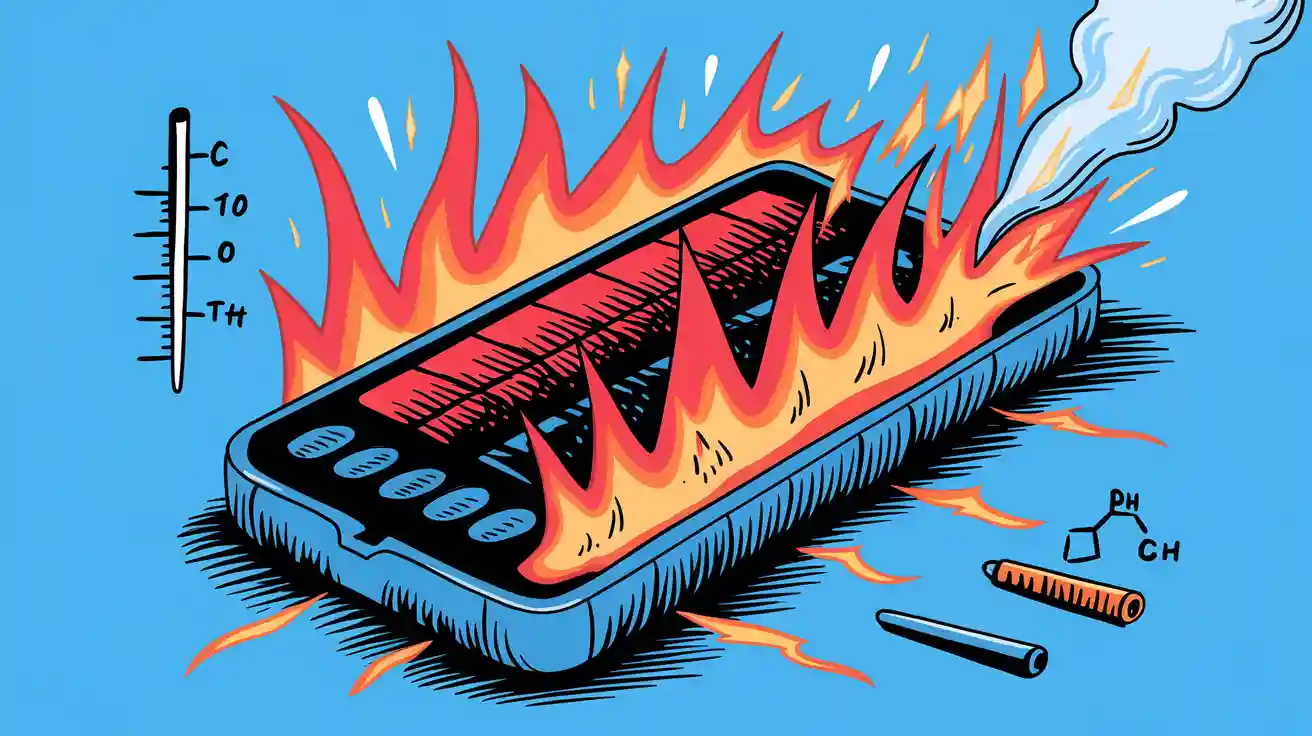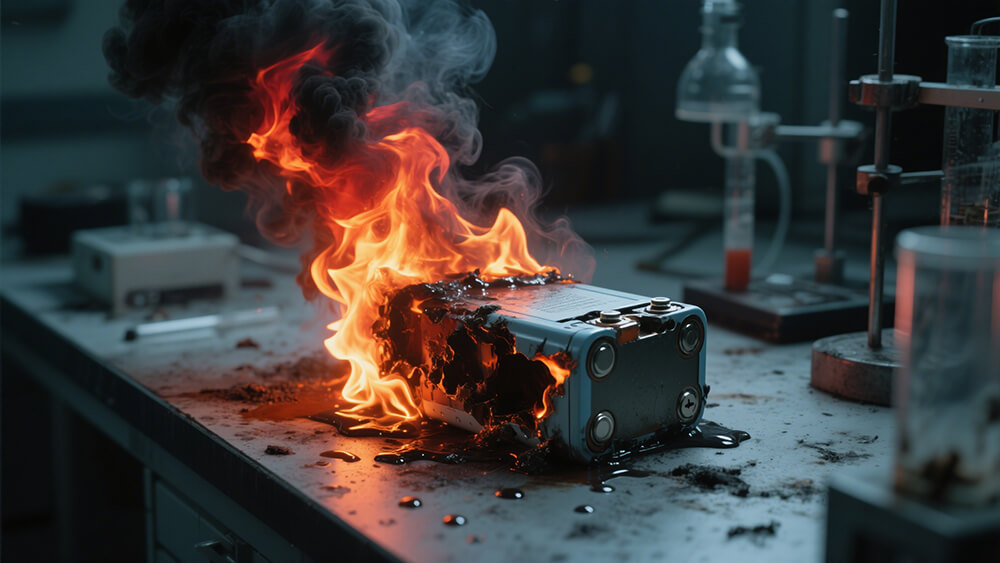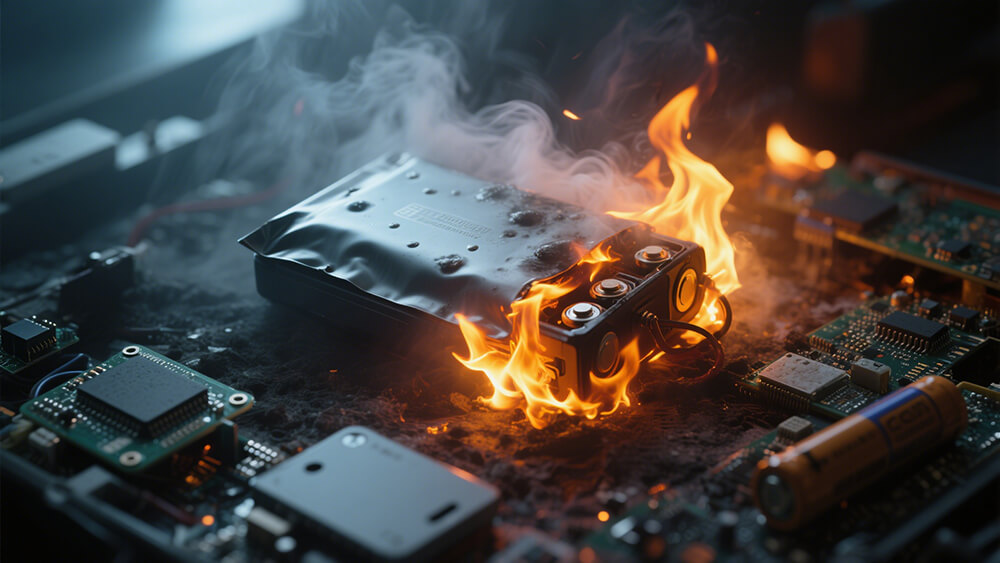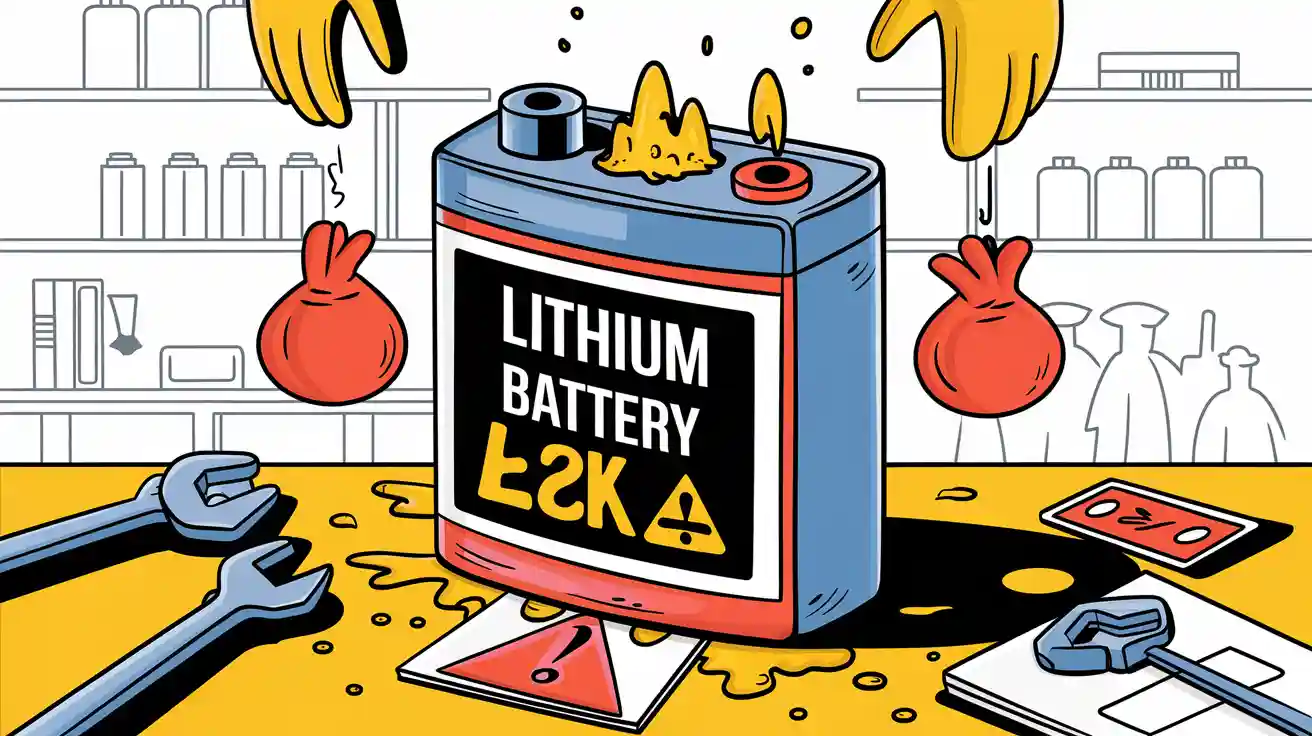Contents

The Fire Temperature of Lithium Battery during thermal runaway can reach extreme levels, typically ranging from 200°C (392°F) to 1,000°C (1,832°F). While high-temperature lithium batteries are designed to function in environments up to 800°C, exposure to temperatures exceeding 60°C greatly increases the risk of lithium battery fires. Proper management of this temperature range is crucial to prevent hazardous situations and maintain system safety.
Key Takeaways
Lithium-ion batteries can get as hot as 200°C to 1,000°C during a thermal runaway. This can be very dangerous.
Battery management systems (BMS) are important. They check the temperature and stop overheating to prevent fires.
Knowing what causes thermal runaway, like overcharging or damage, helps us stay safe and avoid battery fires.
Part 1: Thermal Runaway and Its Impact on Lithium-Ion Batteries

1.1 What Is Thermal Runaway in Lithium-Ion Batteries?
Thermal runaway is a critical phenomenon that occurs when a lithium-ion battery experiences an uncontrollable rise in temperature. This chain reaction begins with the generation of heat inside the battery, which then accelerates chemical reactions, producing even more heat. You might encounter this issue due to mechanical damage, overcharging, or exposure to high external temperatures.
During thermal runaway, the battery releases flammable gases, such as methane and carbon monoxide, which can ignite and lead to lithium battery fires. The process is particularly dangerous in battery packs with multiple cells, as the heat from one cell can spread to others, amplifying the risk. Understanding thermal runaway characteristics is essential for designing safer lithium-ion battery systems, especially in industries like robotics and medical devices. Learn more about lithium-ion batteries here.
1.2 How Thermal Runaway Leads to High Fire Temperatures
The fire temperature of lithium batteries during thermal runaway can reach extreme levels, often exceeding 1,000°C (1,832°F). This escalation occurs because the heat generated inside the battery triggers a series of exothermic reactions. For example, the decomposition of the electrolyte and the breakdown of the cathode material release additional energy. These reactions not only increase the lithium-ion battery fire temperature but also produce flammable gases that can ignite, creating a self-sustaining fire.
In battery packs, the interconnected cells exacerbate the situation. Heat from one cell can propagate to adjacent cells, causing a cascading thermal runaway reaction. This explains why lithium battery fires in large systems, such as industrial or infrastructure applications, are particularly challenging to control. To mitigate these risks, you should consider implementing robust battery management systems (BMS) that monitor temperature and prevent overheating. Explore how BMS can enhance safety.
1.3 Key Triggers of Thermal Runaway in Battery Packs
Several factors can trigger thermal runaway in lithium-ion battery packs. These triggers often stem from internal or external conditions that compromise the battery’s stability. Below is a table summarizing the most common causes:
Trigger | Description |
|---|---|
Mechanical Abuse | Battery deformation due to external forces, such as collisions, leading to potential internal short circuits. |
Overcharging | Occurs when the battery management system fails to stop charging, causing overheating and gas generation. |
Decomposition of SEI | Breakdown of the solid dielectric facial mask on the negative electrode, leading to loss of protection. |
Mechanical abuse, such as punctures or crushing, can create internal short circuits, initiating thermal runaway. Overcharging, often caused by faulty chargers or BMS failures, generates excessive heat and flammable gases. Additionally, the decomposition of the solid electrolyte interphase (SEI) layer on the anode exposes the battery to further chemical reactions, increasing the likelihood of thermal runaway.
To minimize these risks, you should prioritize high-quality battery packs and ensure proper handling. For custom battery solutions tailored to your needs, consult our experts.
Part 2: Factors Affecting the Fire Temperature of Lithium Batteries

2.1 Influence of Battery Chemistry on Fire Temperature
The chemistry of a lithium battery plays a pivotal role in determining its fire temperature during thermal runaway. Different cathode materials exhibit varying thermal stability, which directly impacts the heat generation and fire risks. For instance, LiFePO4 batteries are known for their superior thermal stability, with thermal runaway typically occurring at higher temperatures (200°C–300°C). In contrast, NMC batteries, while offering higher energy density, are more prone to thermal runaway at lower temperatures (150°C–250°C).
This data underscores the importance of selecting the right battery chemistry for applications where fire safety is critical. For example, industries like robotics and medical devices often prioritize LiFePO4 batteries due to their enhanced safety profile.
Tip: When designing battery systems, consider the trade-offs between energy density and thermal stability. For custom solutions tailored to your specific needs, consult our experts at Large Power.
2.2 Role of State of Charge in Thermal Behavior
The state of charge (SOC) significantly influences the thermal behavior of lithium-ion batteries. A fully charged battery (100% SOC) contains more stored energy, which can amplify heat generation during thermal runaway. This increased energy release not only raises the fire temperature but also accelerates the propagation of thermal runaway across battery cells.
In contrast, batteries with a lower SOC exhibit reduced heat generation and are less likely to reach critical temperatures. This is why battery management systems (BMS) play a crucial role in monitoring and regulating SOC levels to prevent overcharging and overheating.
For applications in industrial and infrastructure sectors, maintaining an optimal SOC range is essential to minimize the risk of lithium battery fires. Implementing advanced BMS can help you achieve this by providing real-time temperature monitoring and SOC control.
2.3 External Conditions Impacting Lithium-Ion Battery Fire Temperature
External conditions, such as ambient temperature and mechanical stress, can significantly impact the fire temperature of lithium-ion batteries. Prolonged exposure to high temperatures, such as in a vehicle parked under direct sunlight, can accelerate heat generation and increase the likelihood of thermal runaway. Similarly, mechanical damage, like punctures or crushing, can compromise the battery’s structural integrity, leading to internal short circuits and rapid heat buildup.
Environmental factors, including humidity and pressure, also play a role. High humidity levels can exacerbate the decomposition of the electrolyte, while low-pressure environments may alter the behavior of flammable gases released during thermal runaway.
To mitigate these risks, you should:
Avoid exposing batteries to extreme temperatures or direct sunlight.
Use protective casings to shield batteries from mechanical damage.
Implement thermal management systems to regulate operating temperatures.
By addressing these external factors, you can enhance the safety and reliability of lithium-ion battery systems, especially in demanding applications like consumer electronics and security systems.
Note: For more insights into sustainable battery solutions, explore our sustainability initiatives.
Part 3: Safety Measures for Managing Lithium-Ion Battery Fires

3.1 Risks of High Lithium-Ion Battery Fire Temperatures
High fire temperatures in lithium-ion batteries pose significant risks. When thermal runaway occurs, temperatures can soar up to 1,300°F, releasing flammable gases like methane and carbon monoxide. These gases can ignite, leading to sudden fire and smoke, which are challenging to control.
Fires from lithium-ion batteries often reignite hours or even days after being extinguished.
The combination of high temperatures and flammable gases increases the risk of fire and explosion, complicating firefighting efforts.
Understanding these risks is crucial for industries like infrastructure and consumer electronics, where lithium-ion batteries are widely used. By addressing these hazards, you can enhance battery safety and reduce the likelihood of lithium battery explosions.
3.2 Preventing Thermal Runaway in Lithium-Ion Batteries
Thermal runaway prevention requires a multi-faceted approach. Studies highlight several effective strategies for mitigating this hazard:
Strategy | Description |
|---|---|
Material Improvement | Developing safer cathode and electrolyte materials to reduce the risk of thermal runaway. |
Battery Modeling | Using advanced simulations to predict and prevent thermal runaway during operation. |
Big Data Prediction | Leveraging data analytics to identify early warning signs of thermal runaway. |
Integrated Cooling Systems | Implementing liquid cooling to maintain a safe operating temperature in battery packs. |
Electric-Controlled Pressure Relief | Designing valves to release pressure safely during thermal runaway events. |
These methods, combined with robust battery management systems (BMS), provide comprehensive thermal runaway protection. For custom solutions tailored to your needs, consult our experts at Large Power.
3.3 Best Practices for Lithium-Ion Battery Safety
Adopting best practices can significantly improve lithium-ion battery safety. Consider the following:
Monitor Temperature Regularly: Use sensors to detect overheating and prevent lithium battery fires.
Avoid Overcharging: Ensure your BMS regulates the state of charge to prevent thermal runaway.
Conduct Full-Cell Testing: Evaluate battery safety at the cell level to identify potential hazards.
Use Protective Casings: Shield batteries from mechanical damage to reduce fire risks.
Implement Rapid Safety Screening: Employ calorimetry techniques to assess thermal runaway risks efficiently.
By following these practices, you can minimize the risk of electric vehicle battery fires and ensure the safe operation of lithium-ion batteries in industrial and medical applications.
Tip: For sustainable and safe battery solutions, explore our sustainability initiatives.
Lithium-ion batteries can reach fire temperatures between 200°C and 1,000°C, creating a significant risk. Factors like battery chemistry and state of charge influence these temperatures. Battery management systems and thermal monitoring enhance safety by detecting faults early and limiting fire propagation, as studies have shown. Implementing these measures ensures safer battery operation.
Research demonstrates that integrated fire suppression systems in battery packs effectively limit peak temperatures and delay fire spread.
Battery management systems play a critical role in early fault detection, preventing thermal runaway incidents.
FAQ
1. What should you do if a lithium-ion battery catches fire?
Answer: Use a Class D fire extinguisher or sand to smother the flames. Avoid water, as it can worsen the fire due to lithium’s reactivity.
2. Can lithium-ion batteries explode without warning?
Answer: Yes, internal short circuits or thermal runaway can cause sudden explosions. Regular monitoring and proper handling reduce this risk.
3. How can you safely store lithium-ion batteries?
Answer: Store them in a cool, dry place away from flammable materials. Use fireproof containers for added safety.
For custom solutions tailored to your needs, consult our experts at Large Power.





